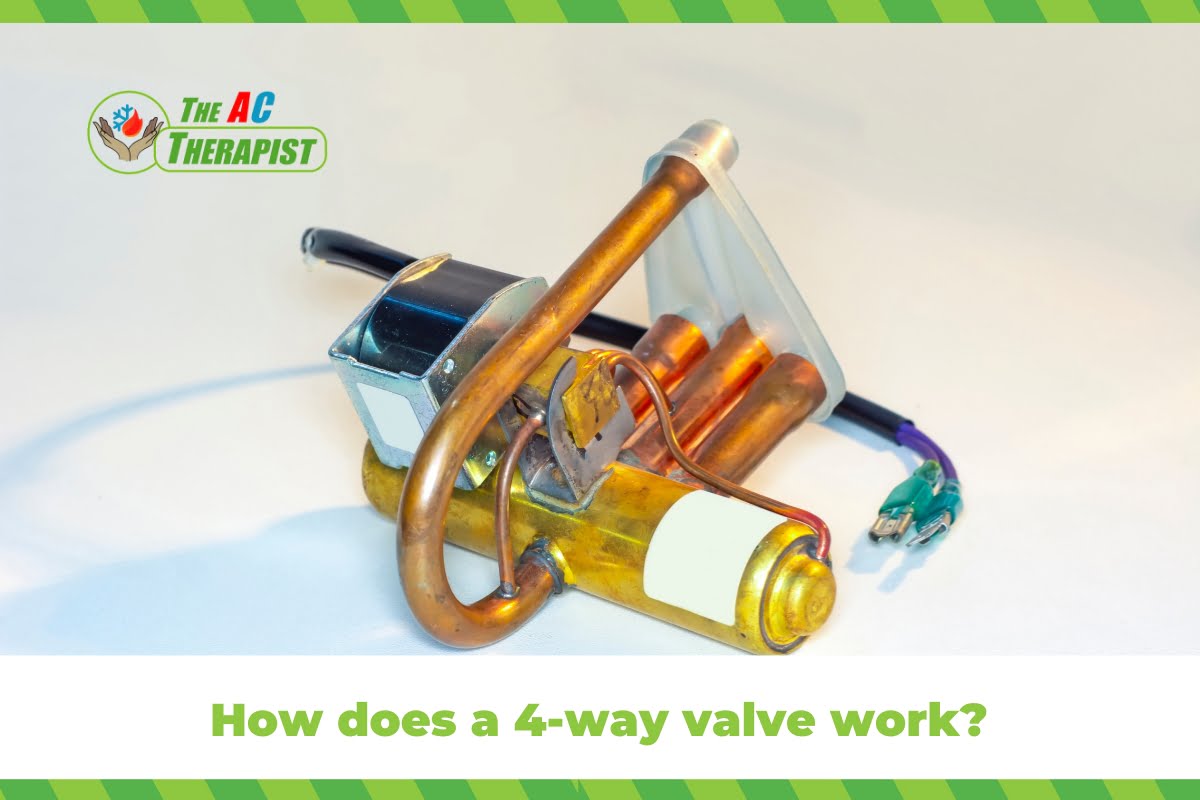How does a 4-way valve work?
Heating, Ventilation, and Air Conditioning (HVAC) systems are integral to maintaining comfort in homes and offices, especially in areas experiencing extreme weather conditions. Central to the functionality of many HVAC systems is a component known as the 4-way valve. This valve plays a crucial role in regulating temperature by controlling the flow of refrigerant through the system. In this comprehensive guide, we will explore the workings of a 4-way valve, its importance in HVAC systems, and how it contributes to efficient heating and cooling.
Understanding HVAC Systems
Before delving into the specifics of a 4-way valve, it’s essential to have a basic understanding of HVAC systems. These systems are designed to provide thermal comfort and acceptable indoor air quality. They achieve this through three main functions: heating, cooling, and air circulation. The heart of many HVAC systems is the heat pump or air conditioning unit, which uses refrigerant to transfer heat either into or out of the indoor space.

The Role of Refrigerant
The refrigerant is a substance with a low boiling point, allowing it to change states (from liquid to gas and vice versa) at convenient temperatures. This property is exploited in HVAC systems to absorb heat from one area and release it in another. The refrigerant’s journey, driven by pressure and temperature changes, is where the 4-way valve plays a pivotal role.
What is a 4-Way Valve?
A 4-way valve, often found in HVAC (Heating, Ventilation, and Air Conditioning) systems, is a type of valve that controls the direction of refrigerant flow within the system. This valve is crucial in systems like heat pumps, which provide both heating and cooling functions.
The primary function of the 4-way valve is to reverse the flow of refrigerant, allowing the HVAC system to switch between heating and cooling modes. In cooling mode, the valve directs the refrigerant to the indoor coil where it absorbs heat from the indoor air, thereby cooling it. The refrigerant then travels to the outdoor coil to release the absorbed heat. In heating mode, this process is reversed: the refrigerant absorbs heat from the outdoor air at the outdoor coil and releases it indoors at the indoor coil.
This ability to reverse the refrigerant flow is what makes heat pumps versatile and efficient for both heating and cooling, depending on the season and the user’s requirements. The 4-way valve’s operation is typically controlled by the HVAC system’s thermostat and is a critical component for the system’s overall functionality.
How Does a 4-Way Valve Work?
A 4-way valve, integral to the operation of many HVAC (Heating, Ventilation, and Air Conditioning) systems, especially in heat pumps, plays a crucial role in controlling the direction of refrigerant flow. This valve is key to enabling the system to switch between heating and cooling modes. Here’s a breakdown of how it works:
Basic Structure
A 4-way valve has four main ports:
- Inlet from the Compressor: High-pressure refrigerant enters the valve from the compressor.
- Outlet to the Indoor Coil: Directs refrigerant to the indoor heat exchanger.
- Outlet to the Outdoor Coil: Leads refrigerant to the outdoor heat exchanger.
- Return to the Compressor: Routes refrigerant back to the compressor.
Operation in Cooling Mode
- Compressor to Outdoor Coil: The compressor pumps high-pressure, high-temperature refrigerant vapor into the valve. In cooling mode, the valve directs this vapor to the outdoor coil.
- Heat Release: At the outdoor coil, the refrigerant releases its heat to the outside air, condensing it into a high-pressure liquid.
- Indoor Coil Entry: The liquid refrigerant then flows through the valve to the indoor coil.
- Cooling Indoor Air: Inside the indoor coil, the refrigerant evaporates by absorbing heat from the indoor air, thus cooling the space.
- Return to Compressor: The now low-pressure, low-temperature refrigerant vapor returns to the compressor through the valve, completing the cycle.
Operation in Heating Mode
- Compressor to Indoor Coil: When the valve is activated to switch to heating mode, it changes the direction of refrigerant flow. The high-pressure, high-temperature refrigerant vapor from the compressor is directed to the indoor coil.
- Heat Absorption: The refrigerant releases heat to the indoor space as it condenses into a liquid in the indoor coil.
- Outdoor Coil Entry: The liquid refrigerant then flows to the outdoor coil.
- Absorbing Heat from Outside: Even in cold conditions, the refrigerant absorbs heat from the outdoor air (due to its low boiling point) and evaporates.
- Return to Compressor: The refrigerant, now a low-pressure vapor, returns to the compressor through the valve, and the cycle repeats.
Control Mechanism
- The switching of the 4-way valve between heating and cooling modes is typically controlled by the thermostat or control system of the HVAC unit.
- A solenoid or similar mechanism is often used to shift the valve’s position.

The Importance of the 4-Way Valve
The 4-way valve in HVAC systems, particularly in heat pumps, is a critical component that significantly impacts the efficiency, functionality, and versatility of the system. Understanding its importance helps in appreciating the sophistication of modern HVAC technology and the comfort it provides in both residential and commercial settings. Here are key aspects of the importance of the 4-way valve:
1. Enables Both Heating and Cooling
- Versatility: The 4-way valve is essential for reversing the flow of refrigerant, which allows a heat pump to switch between heating and cooling modes. This dual functionality makes heat pumps a versatile solution for year-round climate control.
- Space and Cost Efficiency: Without separate heating and cooling systems, the 4-way valve helps reduce installation space and equipment costs.
2. Improves Energy Efficiency
- Heat Transfer Optimization: By efficiently managing the direction of refrigerant flow, the 4-way valve ensures optimal heat transfer, which is crucial for the energy efficiency of the system.
- Reduced Energy Consumption: Efficient heat transfer means less energy is required to maintain desired temperatures, leading to lower energy bills and reduced environmental impact.
3. Enhances System Longevity and Reliability
- Balanced Wear and Tear: Regular switching between heating and cooling modes can lead to more balanced usage of the system’s components, potentially extending the overall lifespan of the HVAC unit.
- Prevents System Overload: By efficiently managing the refrigerant flow, the 4-way valve helps prevent excessive pressure and temperatures that could lead to system malfunctions or breakdowns.
4. Supports Advanced HVAC Functions
- Zoning Systems Compatibility: The 4-way valve’s precise control of refrigerant flow is essential in advanced HVAC systems that offer zoning capabilities, allowing different areas to be heated or cooled independently.
- Integration with Smart Thermostats: Modern HVAC systems often integrate with smart thermostats for enhanced control and efficiency. The 4-way valve’s functionality is key in responding accurately to these smart controls.
5. Contributes to Comfort and Air Quality
- Consistent Comfort: By enabling the HVAC system to respond quickly and efficiently to temperature changes, the 4-way valve helps maintain a consistent and comfortable indoor environment.
- Humidity Control: In cooling mode, the valve aids in dehumidifying indoor air, which is crucial for comfort and air quality, especially in humid climates.
Common Issues with 4-Way Valves
4-way valves in HVAC systems are robust and generally reliable, but like any mechanical component, they can encounter issues over time. Understanding these common problems can help in timely diagnosis and repair, ensuring the efficient operation of your HVAC system. Here are some of the most common issues associated with 4-way valves:
1. Sticking or Jamming
- Symptoms: The valve may get stuck in one position, either heating or cooling, which can lead to a system that only cools or only heats, regardless of the thermostat setting.
- Causes: This issue can be due to debris, lack of lubrication, internal wear and tear, or a failing solenoid.
- Solutions: Regular maintenance, including cleaning and lubrication, can prevent sticking. If the valve is already stuck, a technician may need to repair or replace it.
2. Refrigerant Leaks
- Symptoms: Reduced efficiency in heating or cooling, ice formation on the coils, and higher energy bills can indicate a refrigerant leak.
- Causes: Leaks can occur at the valve connections due to wear, corrosion, or damage to the seals.
- Solutions: Regular inspections can identify leaks early. Repairs might involve tightening connections, replacing seals, or in more severe cases, replacing the valve.
3. Electrical Failures
- Symptoms: The valve fails to switch modes, leading to a system that’s stuck in heating or cooling mode.
- Causes: Electrical issues can arise from a faulty solenoid, wiring problems, or control system malfunctions.
- Solutions: Electrical diagnostics can identify the issue. Replacing the solenoid or repairing the wiring can often resolve these problems.
4. Improper Installation or Sizing
- Symptoms: Inconsistent heating or cooling, increased wear on the HVAC system, and inefficiency.
- Causes: If the valve is not correctly sized for the system, or if it’s improperly installed, it can lead to operational issues.
- Solutions: Ensuring proper installation by a qualified technician and using the correctly sized valve for the system are crucial.
5. Wear and Tear Over Time
- Symptoms: Gradual decrease in HVAC efficiency and reliability.
- Causes: Normal aging can lead to reduced performance of the valve.
- Solutions: Regular maintenance and timely replacement can mitigate these issues.
Maintenance and Troubleshooting
Maintaining and troubleshooting a 4-way valve in an HVAC system is crucial for ensuring its efficient and reliable operation. Regular maintenance can prevent common issues, and understanding how to troubleshoot can save time and resources. Here’s a guide to help you with maintenance and troubleshooting:
Maintenance of 4-Way Valves
- Regular Inspections: Schedule routine inspections by a qualified HVAC technician. These inspections can identify early signs of wear, leaks, or potential electrical issues.
- Cleaning: Keep the valve and its surrounding area clean. Dirt, debris, and other contaminants can cause the valve to stick or operate inefficiently.
- Lubrication: Some valves may require lubrication for smooth operation. Always use the recommended type of lubricant and follow the manufacturer’s guidelines.
- Checking Refrigerant Levels: Low refrigerant levels can affect the performance of the HVAC system. Ensure that refrigerant levels are checked and refilled if necessary.
- Tightening Connections: Loose connections can lead to leaks or electrical issues. Ensure that all connections are tight and secure.
- System Calibration: Ensure that the HVAC system, including the thermostat and control systems, is correctly calibrated. This ensures that the 4-way valve operates as intended.
Troubleshooting Common Issues
- Valve Sticking: If the valve is stuck, check for any debris or dirt that might be causing the issue. If cleaning doesn’t resolve it, the valve might need to be replaced.
- Refrigerant Leaks: Look for signs of leaks around the valve connections. Leaks often require professional repair or replacement of the affected parts.
- Electrical Failures: If the valve is not switching modes, check the electrical connections, including the solenoid. Use a multimeter to check for electrical continuity. If the solenoid is faulty, it may need to be replaced.
- Inconsistent Heating or Cooling: If the system is not heating or cooling effectively, this could be due to improper valve operation. Check if the valve is correctly switching between modes. If not, it may be a control issue or a fault with the valve itself.
- Unusual Noises: Listen for any unusual noises coming from the valve or the surrounding area, as this can indicate internal issues or obstructions.
When to Call a Professional
Knowing when to call a professional for HVAC issues, especially concerning the 4-way valve and other critical components, is essential for maintaining the system’s efficiency, safety, and longevity. Here are scenarios where it’s advisable to seek professional assistance:
1. Complex System Issues
- Unfamiliar Sounds: If you hear unusual noises like banging, hissing, or whistling from the HVAC system, it could indicate a serious issue.
- Inconsistent Heating or Cooling: If your system is not effectively heating or cooling, despite basic troubleshooting, a professional can diagnose and fix the problem.
- Frequent Cycling: If the system is constantly turning on and off, it could be a sign of a larger issue.
2. Electrical Problems
- Control Failure: If the system’s controls or thermostat are not responding correctly, or if there are issues with the electrical connections, professional expertise is needed.
- Solenoid Valve Issues: Problems with the solenoid valve in the 4-way valve often require a professional diagnosis and repair.
3. Refrigerant Issues
- Leaks: Refrigerant leaks can be harmful to the environment and reduce the efficiency of your system. Handling refrigerant requires certification and should be left to professionals.
- Incorrect Refrigerant Levels: If you suspect the refrigerant levels are incorrect, a professional can check and refill them as necessary.
4. Regular Maintenance and Inspections
- Annual Check-ups: Regular professional maintenance can prevent major issues and extend the life of your HVAC system.
- Pre-season Preparation: Have a professional check your system before the heating or cooling season begins to ensure it’s in top working order.
5. Installation or Replacement
- New Installations: Installing new HVAC components, especially something as critical as a 4-way valve, should be done by a professional to ensure correct installation and operation.
- System Upgrades: Professional installation is recommended for optimal performance and warranty purposes if you’re upgrading your system or components.
6. Safety Concerns
- Gas or Burning Smells: If you detect a gas leak or burning smells, shut down the system immediately and call a professional.
- Water Leaks: Significant water leakage around your HVAC system could indicate a serious problem that needs professional attention.
Mastering Climate Control: Understanding the 4-Way Valve in Your HVAC System
In wrapping up our exploration of the 4-way valve and its critical role in HVAC systems, it’s clear that this component is more than just a piece of hardware; it’s a key player in ensuring our indoor environments are consistently comfortable, no matter the season. The ability of the 4-way valve to efficiently switch the flow of refrigerant between heating and cooling modes is a marvel of modern engineering, enhancing the versatility and energy efficiency of our heating and cooling systems.
For residents and businesses in the Tampa Bay area, understanding the function and importance of the 4-way valve is particularly crucial. Our region’s climate demands robust and reliable HVAC systems that can seamlessly transition between cooling and heating. This is where The AC Therapist, your local HVAC expert, comes into play. With a deep understanding of the intricacies of HVAC systems, including the pivotal 4-way valve, The AC Therapist is adept at ensuring that your air conditioning and heating systems are not just operational but optimized for peak performance.
Whether you are encountering issues with your HVAC system, considering an upgrade to more energy-efficient models, or require routine maintenance, The AC Therapist stands ready to assist. Our team of skilled professionals is not only knowledgeable in the latest HVAC technologies but also committed to providing top-notch service tailored to the unique needs of the Tampa Bay community.
Regular maintenance, especially in a climate as demanding as ours, is key to prolonging the life of your HVAC system, maintaining energy efficiency, and keeping operational costs in check. Neglecting this critical aspect can lead to decreased performance, higher energy bills, and costly repairs down the line. By entrusting your HVAC maintenance to The AC Therapist, you’re choosing peace of mind, knowing that your system is in capable hands.
Moreover, The AC Therapist isn’t just about fixing problems as they arise; we’re about proactive solutions and preventative measures. From offering advice on the best HVAC systems for your specific needs to implementing regular check-ups and tune-ups, our goal is to ensure your indoor air quality and comfort are maintained year-round.
In summary, the 4-way valve may be a small component in the grand scheme of your HVAC system, but its impact on your comfort and energy efficiency is immense. For all your HVAC needs, from understanding the technical aspects of your system to ensuring its long-term reliability and efficiency, look no further than The AC Therapist. We are here to provide the therapy your HVAC system needs, ensuring you stay comfortable in the beautiful Tampa Bay area, regardless of the weather outside.










